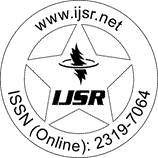Downloads: 6 | Views: 315 | Weekly Hits: ⮙1 | Monthly Hits: ⮙2
Research Paper | Biochemistry Science | Indonesia | Volume 11 Issue 8, August 2022 | Popularity: 5.2 / 10
Antiinflammatory of Jatropha curcas Leaf: Role of TNF-? and IL-1
Warsinah, Hanif Nasiatul Baroroh
Abstract: Jatropha curcas extract reported analgesic and anti-inflammation effects on albumin-induced mice and antiarthritis in Complete Freud's Adjuvant-induced mice. Phytochemical screening proves that Jatropha curcas contains flavonoid compounds, steroids, triterpenoids, alkaloids, saponins, and tannins. With a cellular approach, an invitro test can be known anti-inflammation mechanism of active compounds of Jatropha curcas leaves. In vitro tests can also be known expression of IL-1 and TNF? cytokine gene target of this research. The results showed that active isolates activity of TNF-? activity was 176, 967 ?g / ml, and the IL-1 activity was 1024.077 ?g / ml. The isolation was higher than the compound activity on TNF-? and IL-1. In each isolate after TLC, the isolates contained flavonoid and terpenoid compounds. The correlation between in vivo and in vitro provides clear scientific information about the pharmacodynamics of the active compounds.
Keywords: Jatropha curcas, isolate, Cytokine, TNF-? dan IL-1
Edition: Volume 11 Issue 8, August 2022
Pages: 168 - 170
DOI: https://www.doi.org/10.21275/SR22730081122
Make Sure to Disable the Pop-Up Blocker of Web Browser
